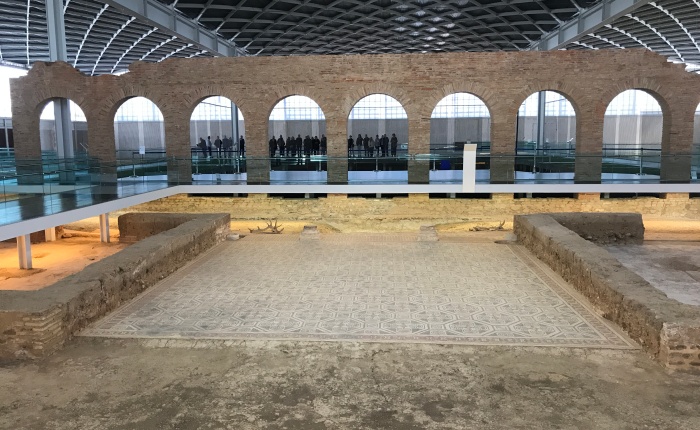Among our many blessings here in Alicante: one of the first locals we got to know was a tourist guide. Guía grew up in Alicante, and it is no exaggeration to say he knows everyone in town.
Last fall, Guía began working with a local travel agent to put together a dual language trip to Palencia in Castille y León. Apparently, setting up the locations and guides was not a problem, but it took over 6 months to line up the restaurants and menus.
In April, 11 members of our Merry Band of Ex-Pats joined 11 Alicantin@s for several days of sightseeing, exploring, dining, and wine tasting.
Local guides in the Palencia area provided the Spanish-language tours, and Guía translated into English for our group.
This post includes some highlights; we did a lot more!
They take the pollarding of their trees very seriously in Palencia:

Lots of fun statues in town:







We were more impressed with the storks than we were with the exterior of the cathedral:


We eventually got over the storks and explored the interior of the Catedral de San Antolin:






The highlight of our trip was the Villa Romana La Olmeda ruins near Saldaña, which were found by Javier Cortes on his farm in 1968. Unable to get government support, Cortes worked personally to preserve the site, mapping and illustrating his finds:



Excavation and restoration of the site was completed in the 1980s, and Cortes donated the site to the Comunidad in 1984. The entire site was enclosed for its preservation in 2003.
The original structure dates from first century and included underfloor radiant heating. Destroyed by a fire in the 4th century, the walls and other parts of the structure collapsed, covered by earth, protecting the mosaics.
The quality of the mosaics is incredible:







One of the mosaics includes portraits of family members:


We enjoyed a mini-cruise on the Canal de Castilla:




The canal was built in the 17th century and took 100 years to complete. It runs 207 miles along the Camino de Santiago. Used primarily for grain transportation, the canal was at one time populated by 400 boats traveling the 49 locks (150 meters from the lowest to the highest points of the canal, the locks were used in part to prevent a current), at times pulled along mule tracks. One boat could hold 50 tons of grain. Now four boats provide tours and the canal is used primarily for irrigation and drinking water. It irrigates 40,000 hectares.
Palencia: a place we would never have found on our own, but a place we would happily return to!
